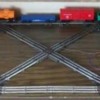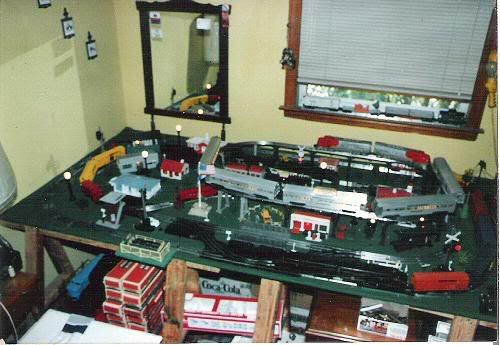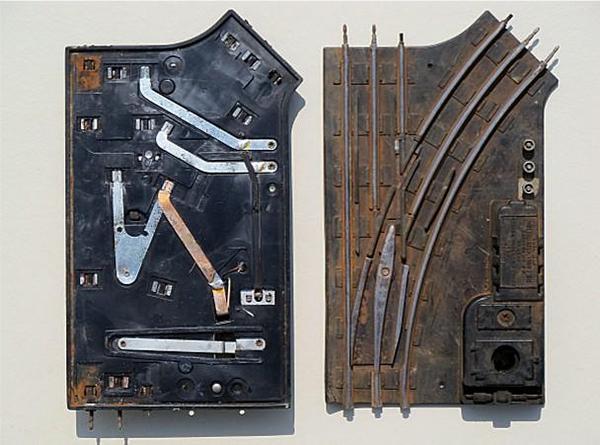I'm wondering what experiences other folks have had in using 1122 switches for an O27 layout.
I was given some old 1122 switches in really dirty neglected condition. I've cleaned them up and completely disassembled some of them for rehab and got them to work well, and am also converting them to work on fixed voltage input, and optionally with capacitor discharge power.
The earliest 1122 switches had built-in gaps in the outer rails and did not require the use of additional track insulating pins, but they were more prone to stall smaller 4-wheel locos. The later 1122-E switches work better, you just have to be sure to use insulating rail pins in the two inner rails connecting to the frog. I have mostly the later switches.
The 1122 switches are basically the cheaper O27 version of the traditional O22 switches, both having non-derailing features. However the 1122 has no 'brains' and the non-derailing feature draws current for any metal-wheeled train going through the switch in either direction, regardless of whether or not the points are already lined correctly for a trailing move, and for as long as any metal wheels are on the switch. So the issue is, each 1122 switch uses about an amp of current when a train is on the switch. Or if it's fed with capacitor-discharge power, it drains the capacitor until it has a few seconds to recharge, and you can't use that same capacitor power for another switch in close proximity.
I'm considering track plans for an O27 layout because I already have lots of O27 track and switches. I'm thinking that it's probably not a good idea to have too many 1122 switches together because of the current draw, unless each switch has its own capacitor discharge supply. Which is possible, but it requires large and somewhat expensive capacitors. Or I could use a separate transformer to power them with my fixed voltage modification.
Any suggestions on how to make the best use of 1122 switches?
Photo shows a temporary trial layout with four 1122 switches.








